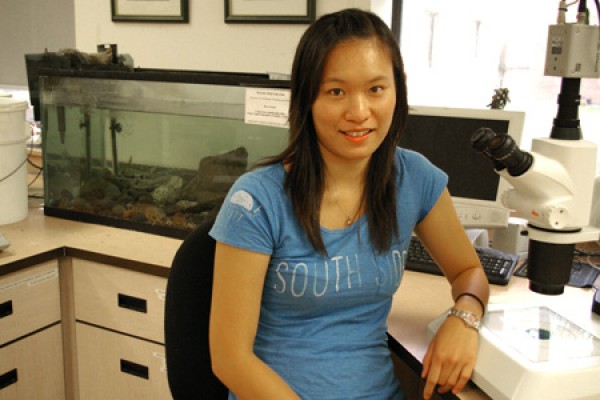 Farrah Chan is currently in South Africa for a workshop at the Centre for Invasion Biology.
Farrah Chan is currently in South Africa for a workshop at the Centre for Invasion Biology.
Farrah Chan spends most of her time studying how non-domestic species invade our Arctic waterways by travelling in the ballast tanks of ocean going ships, but the graduate student says her research could be used predict how bugs and certain varieties of fungus being shipped around the world in things like wooden pallets might invade new ecosystems.
That’s the message the PhD student in the Great Lakes Institute for Environmental Research will deliver when she makes a presentation this Wednesday at a workshop in South Africa being hosted by the Centre for Invasion Biology.
Based on the research she’s done on how various aquatic invasive species have found new homes in North American waters, Chan says new computer models can be created to predict how other terrestrial species like beetles and other insects might invade new ecosystems.
“I’m going to be talking about the methodology I’m using and how we can create simulations to predict these invasions,” Chan said yesterday during a telephone interview from Stellenbosch, South Africa. “It’s definitely applicable to different systems.”
Chan is travelling with GLIER director Dan Heath and Hugh MacIsaac, her academic supervisor and the director of the Canadian Aquatic Invasive Species Network, which is headquartered at GLIER. By uniting CIB researchers with six CAISN professors, six grad students and post-doctoral fellows, the workshop brings together the top two invasion biology research networks in the world, Dr. MacIsaac said.
“We’re addressing emerging issues in both countries, and identifying future collaborative opportunities,” he said. “One issue we are working on is 'wicked problems' in invasion ecology. These problems have ever-changing conditions, and are complex and often contradictory. This is an emerging theme in ecology, and we’re applying it to the problem of global invasions, including the Great Lakes.”
South Africa’s fresh waters actually face many of the same stressors found in the Great Lakes, according to Dr. Heath.
“GLIER has tremendous potential for collaborating with South African scientists,” he said, “and we can use our expertise and infrastructure to address some of those stressors they’re facing here. We’ve already discussed a number of possibilities, including environmental genetic approaches for endangered native species and introduced species, laser ablation-mass spectrometry techniques for habitat use determination in aquatic fish and invertebrates, and stable isotope applications for measuring the effects of invasive species on food webs.”
After the workshop, Chan was planning on spending a few extra days in South Africa and will go on a safari at Kruger National Park.

.jpg)